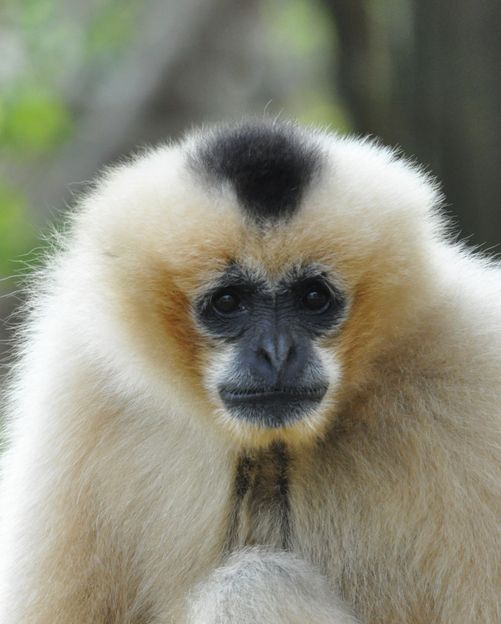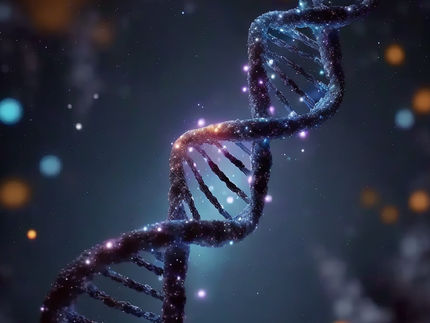Gibbon genome sequenced
Mobile DNA element allows conclusions on the evolution of apes
An international team of researchers that includes Christian Roos, Markus Brameier and Lutz Walter from the German Primate Center (DPZ) in Göttingen, have decoded the genome of gibbons from Southeast Asia. With this, the entire genetic information of five different species of this primate family has been sequenced for the first time. Comparisons with the genome data of humans and our closest relatives, the great apes, show that while we all genetically have the same ancestors, the genetic information of the gibbons has changed more rapidly and stronger in the course of the evolutionary process. The researchers could identify a new DNA element that only occurs in gibbons. This DNA element increases the mutation rate, and is thus of crucial importance for the evolutionary development. Thanks to the DNA element, the gibbon is also known as the one with the long, strong arms who elegantly moves through the forests of Southeast Asia. The study published in the current issue of Nature, allows important insights in the molecular fundamentals of the evolutionary process.

Northern White-cheeked Gibbon female (Nomascus leucogenys)
Tilo Nadler
The gibbons, known as small apes are genetically farther from humans than the great apes chimpanzees, bonobos, gorillas and orang-utans. In the genealogy of the evolutionary developments of primates, the gibbons do occupy a key position. In the course of the evolutionary process, they were the first to split from the hereditary line of the great apes and humans.
„The complete sequencing of the gibbon genome was pending until now“, says Christian Roos, a scientist from the Primate Genetics Laboratory at the DPZ. “In order to fully understand the human evolution and to draw conclusions on our evolutionary roots, we need to conduct phylogenetic research of our more distant relatives.“
Genetic disorder and jumping gene sections
In their genome analysis, the researchers discovered that the genetic information of the gibbons differs in their entirety from that of humans and of apes. “The genetic information itself is similar to ours”, explains Christian Roos. “However, large segments of DNA and in such, many genes are arranged differently on the individual chromosomes.” This "chromosomal disorder" is a key feature of the gibbon genome and has probably occurred after their secession from the ancestral line of the apes and humans.
Through further research on the gibbon DNA, scientists were finally able to identify a possible cause for these changes in the genome: A jumping DNA element called LAVA transposon can be copied and integrated elsewhere in the genome. So far, transposons or jumping genes have been detected in many different organisms. However, the LAVA transposon is unique to the gibbon genome. The special feature of this DNA element is its positioning in precisely those genes that play a role in the chromosome distribution during cell division and thus influences them. Analyses of the phylogenetic development of the gibbon line also indicate a connection to the existence of the LAVA transposons. Their first appearance can be traced back with a high probability to the time of the splitting of the gibbons from the line of apes and humans.
Genetic basis for gibbon-specific way of life
Through comparative DNA analyses, the researchers could also identify genes subjected to a positive selection. In the course of evolution, genes that favored the adaptation of the gibbons to their way of life, continued to develop. These include genes responsible for anatomical specifications such as longer arms or stronger muscles. Gibbon genes, which have undergone a positive selection are, for example TBX5, which is required for the development of the front extremities and COL1A1, responsible for the development of the protein collagen. The latter is one of the main components of connective tissues in bones, teeth and tendons.
"These genes are positively selected only in the gibbon genome", says Christian Roos. “In future projects, sequencing will be performed on other gibbon species. We hope to be able to further characterize these genes and to identify other gibbon-specific genes.”
Original publication

Get the analytics and lab tech industry in your inbox
By submitting this form you agree that LUMITOS AG will send you the newsletter(s) selected above by email. Your data will not be passed on to third parties. Your data will be stored and processed in accordance with our data protection regulations. LUMITOS may contact you by email for the purpose of advertising or market and opinion surveys. You can revoke your consent at any time without giving reasons to LUMITOS AG, Ernst-Augustin-Str. 2, 12489 Berlin, Germany or by e-mail at revoke@lumitos.com with effect for the future. In addition, each email contains a link to unsubscribe from the corresponding newsletter.


























































